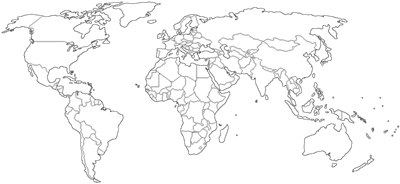Results.
Showing 1 to
No Tender Found! |

Most trusted source for Tendering Opportunities and Business Intelligence since 2002
Get access to latest CIS energy power electrical tenders and bids. Find business opportunities and government contracts for CIS energy power electrical tenders, CIS transformer tenders, CIS switchgear tenders, CIS solar tenders, CIS generator tenders, cabling tenders, CIS wiring tenders, wind energy tenders, CIS hydro power tenders, CIS power plant tenders. Find CIS energy power electrical bids, tenders, procurement, RFPs, RFQs, ICBs.
Electricity is the set of physical phenomena associated with the presence and motion of matter that has a property of electric charge. Various common phenomena are related to electricity, including lightning, static electricity, electric heating, electric discharges and many others. Electricity is at the heart of many modern technologies, being used for: Electric power where electric current is used to energise equipment; Electronics which deals with electrical circuits that involve active electrical components such as vacuum tubes, transistors, diodes and integrated circuits, and associated passive interconnection technologies. . Renewable energy is energy that is collected from renewable resources that are naturally replenished on a human timescale. It includes sources such as sunlight, wind, rain, tides, waves, and geothermal heat. Renewable energy stands in contrast to fossil fuels, which are being used far more quickly than they are being replenished. Although most renewable energy sources are sustainable, some are not. For example, some biomass sources are considered unsustainable at current rates of exploitation. Renewable energy often provides energy in four important areas: electricity generation, air and water heating/cooling, transportation, and rural (off-grid) energy services. About 20% of humans' global energy consumption is renewables, including almost 30% of electricity. About 8% of energy consumption is traditional biomass, but this is declining. Over 4% of energy consumption is heat energy from modern renewables, such as solar water heating, and over 6% electricity. Globally there are over 10 million jobs associated with the renewable energy industries, with solar photovoltaics being the largest renewable employer. Renewable energy systems are rapidly becoming more efficient and cheaper and their share of total energy consumption is increasing, with a large majority of worldwide newly installed electricity capacity being renewable. In most countries, photovoltaic solar or onshore wind are the cheapest new-build electricity. Many nations around the world already have renewable energy contributing more than 20% of their energy supply, with some generating over half their electricity from renewables. National renewable energy markets are projected to continue to grow strongly in the 2020s and beyond. A few countries generate all their electricity using renewable energy. Renewable energy resources exist over wide geographical areas, in contrast to fossil fuels, which are concentrated in a limited number of countries. Deployment of renewable energy and energy efficiency technologies is resulting in significant energy security, climate change mitigation, and economic benefits. However, renewables are being hindered by hundreds of billions of dollars of fossil fuel subsidies. In international public opinion surveys, there is strong support for promoting renewable sources such as solar power and wind power. Renewable energy technology projects are typically large-scale, but they are also suited to rural and remote areas and developing countries, where energy is often crucial in human development. As most of the renewable energy technologies provide electricity, renewable energy is often deployed together with further electrification, which has several benefits: electricity can be converted to heat, can be converted into mechanical energy with high efficiency, and is clean at the point of consumption. In addition, electrification with renewable energy is more efficient and therefore leads to significant reductions in primary energy requirements. A non-renewable resource (also called a finite resource) is a natural resource that cannot be readily replaced by natural means at a pace quick enough to keep up with consumption. An example is carbon-based fossil fuels. The original organic matter, with the aid of heat and pressure, becomes a fuel such as oil or gas. Earth minerals and metal ores, fossil fuels (coal, petroleum, natural gas) and groundwater in certain aquifers are all considered non-renewable resources, though individual elements are always conserved.
The Commonwealth of Independent States (CIS) is a regional intergovernmental organization in Eastern Europe and Asia. It was formed following the dissolution of the Soviet Union in 1991. It covers an area of 20,368,759 km2 (7,864,422 sq mi) and has an estimated population of 239,796,010. The CIS encourages cooperation in economic, political and military affairs and has certain powers relating to the coordination of trade, finance, law making, and security. It has also promoted cooperation on cross-border crime prevention. Eight of the nine CIS member states participate in the CIS Free Trade Area. Three organizations originated from the CIS, namely the Collective Security Treaty Organization, the Eurasian Economic Union (alongside subdivisions, the Eurasian Customs Union and the Eurasian Economic Space); and the Union State. While the first and the second are military and economic alliances, the third aims to reach a supranational union of Russia and Belarus with a common government, flag, currency and so on. countries in cis region, Armenia, Azerbaijan, Belarus, Georgia, Kazakhstan, Kyrgyzstan, Moldova, Russia, Tajikistan, Turkmenistan, Ukraine, and Uzbekistan.
No Tender Found! |